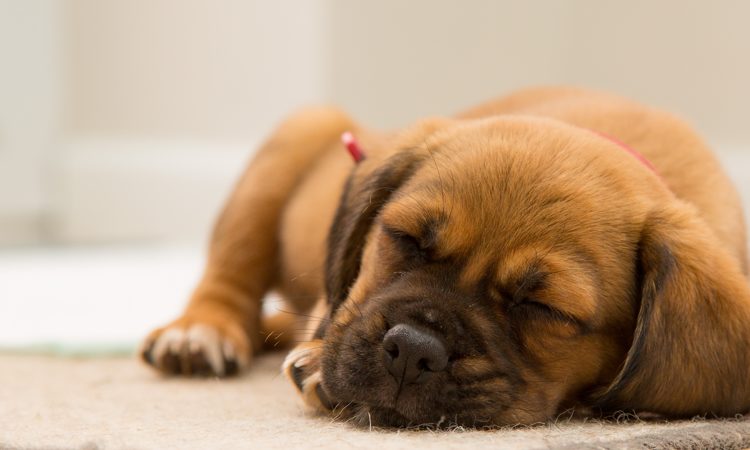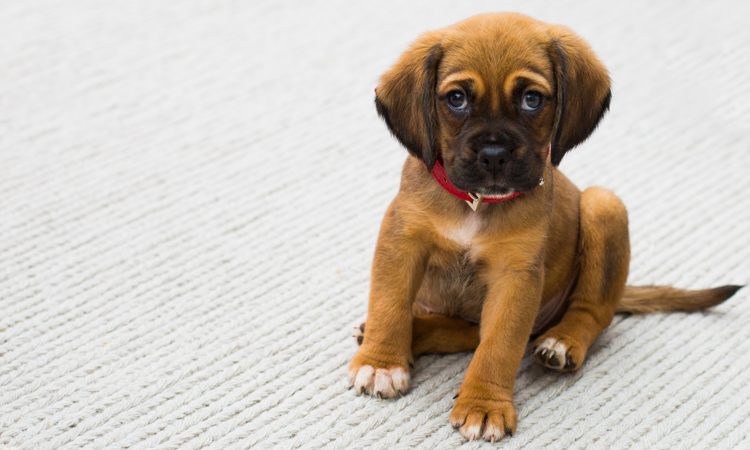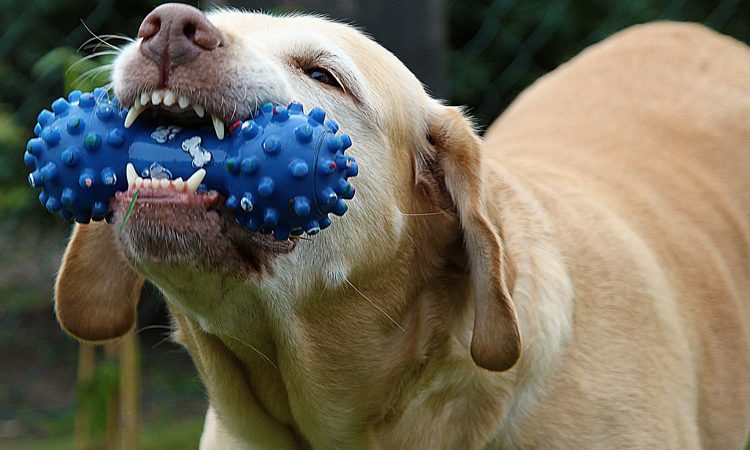It’s never too early to begin teaching essential training for your puppy such as basic commands and tricks. But where to begin? With different guides on everything from puppy toilet training to tricks and behaviour, there’s lots to consider. In this guide we’ll walk you through all of the essential training you need to help your puppy become a ‘pawsome’ adult dog.
Puppy training basics
Puppies learn very quickly and a puppy’s development contains many key milestones worth adhering to. A good breeder may begin to teach your puppy toilet training or basic commands but it’s best to begin or continue training as soon as you bring your puppy home at seven or eight weeks. Keep training sessions short: five or 10 minutes maximum a few times per day, then build up to longer sessions. This will ensure your puppy stays interested and that training does not become a chore.
Stock up on lots of tasty treats, ensuring they are suitable for your puppy’s age, or use natural treats such as chicken and cheese.
Use lots of positive reinforcement for your puppy. This could be in the form of tasty treats, physical contact such as stroking and verbal praise such as “good boy”. Never tell them off for not learning something quickly, as this may make them more reluctant to try in the future.
Most of all, stay calm and have fun. Training helps to build a great bond between you and your puppy and they will love trying to impress you with new things.
Teach your puppy their name

Teaching your puppy their name is a great basis for other training, such as teaching them to come when called.
To get started, help your puppy learn that his name means something wonderful is about to happen. In a quiet, calm environment say your puppy’s name then reward him instantly with a treat.
Wait a few minutes, then repeat. Practice this a few times a day until your puppy is instantly making eye contact when their name is called.
Next, wait until your puppy is distracted (for example sniffing, or playing) then say his name. If he looks at you, mark the action with a word such as “yes” or “good” and follow this up with a treat.
If your puppy doesn’t respond to their name, simply wait a few minutes then try again.
It’s very important to never use your puppy’s name as a way of telling them off. Don’t overuse it either. Keep your puppy’s name for positive, special moments and he will always love being called by you.
Toilet training your puppy

It’s normal for your puppy to have a few accidents when they first come to live with you. Since puppies are growing quickly they eat more than adult dogs and are still learning how to hold it until an appropriate time.
The good news is that puppies pick up toilet training very quickly. Start by taking your puppy outside at regular intervals. As soon as they wake up, after a drink or meal, every few hours and before bed is a great place to start.
Place puppy pads or newspaper near doorways to help your puppy learn where to go if they can’t get outside. As your puppy begins to use the pads, move them closer to the door until they are eventually outside.
Each time your puppy goes to the toilet outside, praise them calmly with a treat or verbally. If your puppy is sniffing inside, or circling an area, these are signs they may need to go and you should take them outside as quickly as possible.
If your puppy does have an accident, don’t tell them off as this may make them hide (probably behind the sofa) next time they want to go. Instead, calmly take them outside or into a different area and clean it up as soon as possible.
Train your puppy to sleep through the night

Like babies, puppies need lots of sleep to help them grow. Some puppies will go straight to sleep without a peep from day one and others will need more help.
To help train your puppy to sleep through the night try this before-bed routine:
- A tired puppy is a happy puppy, so ensure your puppy has had lots of exercise and play during the day.
- Half an hour before bed, avoid any excitement or games to help your puppy settle and feel calm.
- 20 minutes before bed, take your puppy outside. A puppy that doesn’t need to pee is much more likely to sleep through the night.
- Make your puppy’s bed or crate, if they are crate trained, a cosy sleeping environment with a soft blanket. If you have a toy or blanket from your puppy’s litter, put this in.
- Calmly put your puppy in his bed or crate, avoid talking to them, then leave the room or settle down yourself.
In the first few days or weeks, your puppy may whine or cry when you go to bed. Try to ignore this, otherwise they will learn that whining gets them the best thing ever: your attention. Most puppies should settle quickly. If they don’t, you may need to quietly wait until they learn that night time means sleep.
If your puppy wakes in the night and is whining or pacing, they may need to go to the toilet. Take them outside without talking to them to help keep them calm. Once they have been, return them to their bed or crate. You can also give them a small treat or chew to help settle them back to sleep.
How to train your puppy to sit and other basic commands

Teaching your puppy “sit” and other basic commands is a great way to keep your puppy’s mind active and get them ready to cope with many different experiences in life.
Teach your puppy to sit
- Hold a treat in your hand in front of your puppy’s nose and begin slowly moving your hand upwards.
- As your puppy’s nose follows your hand, he should naturally be guided into a sit position.
- As his bum touches the floor, give him the treat and a praise word.
- s he begins to do this more quickly, introduce the word “sit” as his bum touches the floor.
- After lots of practice, try saying the word “sit” and see if he sits. If he does, reward him. If he doesn’t, go back to helping guide his nose with a treat, using the word “sit” when he touches the floor.
Teach your puppy to lay
- Ask your puppy to sit.
- Hold a treat in front of his nose and gradually lower your hand until his nose follows it down.
- As his tummy touches the floor release the treat.
- As he begins to do this more easily, introduce the word “lay” as his tummy touches the floor.
- After lots of practice, see if he will “lay” when you say the word and reward him each time. If he doesn’t, go back to guiding until he can do it with just the command.
Teach your puppy to stay
- Ask your puppy to sit.
- Raise one hand and say “stay” or “wait”.
- Take one step slowly backwards. If your puppy remains in the seated position, step back towards him and give a treat with lots of praise.
- Gradually increase the number of steps you take before you return to treat your puppy, building up slowly to 5 or 6.
- If your puppy doesn’t remain in the sit position, simply decrease the space between you until he can hold a sit until you return.
Biting training for your puppy

Puppies use their mouths to play and explore the world. As owners, we have to teach them what is appropriate.
In a litter, if a puppy becomes too rough or bites too hard during play, the other puppy will let out a squeal (our version of an “ouch”). You can mimic this behaviour while playing with your puppy. If they bite too hard, let out a short, high-pitched squeal and turn away from them for a minute so that they know, if I bite too hard the game will stop. Very quickly your puppy will learn what type of mouthing is appropriate during play.
What tricks and training have you been working on with your puppy? Let us know in the comments below, or share them with the DogBuddy community on Facebook or Twitter.
